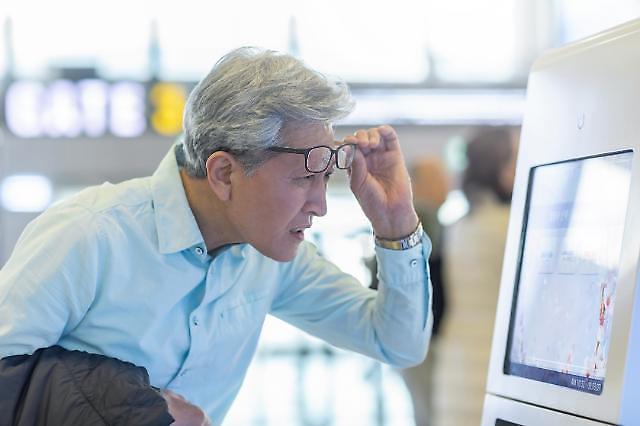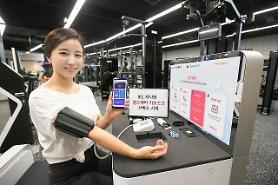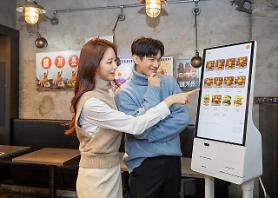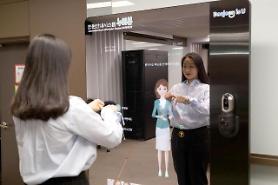
[Gettyimages Bank]
Kim Kwee-hee, a 65-year-old housewife, recalled her recent incident with the ordering robot. Kim said that she has trouble using digital kiosk machines every time she encounters one. "I would at least try to use one of those machines if the letters on their screen were bigger. They are so tiny to read!" she told Aju Korea Daily.
According to data released by the National Information Society Agency (NIA), the rate of adoption of digital kiosks at restaurants and coffee shops accelerated during the last few years to have some 27,000 kiosks across the country by April 2021. Industry data showed that some 30,000 units of kiosks were sold in 2022.
Franchise restaurants, fast food stores, and coffee shops in South Korea are rapidly adopting digital kiosks equipped with a large-sized touch panel display to receive orders and payments from customers. The market for robot clerks stood at 350 billion won ($264 million) in 2020. Store owners can reduce operating costs with digital kiosks.
While younger generations familiar with using smartphone apps can make orders and payments with no hassle, it is hard for older people to use the remote ordering system mainly because the smartphone app-like interface of digital kiosks is very complicated and the fonts displayed on the screen are too small.
A survey of 300 people aged 65 or older, conducted by the Korea Consumer Agency, showed that 81.6 percent had experience in using unmanned kiosks at restaurants. 51.5 percent had found it hard to use kiosks because of the complicated steps they had to go through to make an order. 49 percent had felt stressed because of their slow order-making speed and the people waiting at the back.
To help old people use the unmanned ordering machines, Seoul Digital Foundation operated by the capital city set out to collaborate with Korea Digital Payments (KDP), a digital kiosk maker, to analyze the reason why old people find it hard to use the unmanned ordering machines and run surveys to look for points that can be improved. A new user interface (UI) will be developed and tested to create a standardized old people-friendly digital kiosk system.
In January 2022, the capital city issued guidelines and standards including large fonts and simpler screen layouts to increase the readability of kiosk menus. However, the non-compulsory guidelines were not adopted by the restaurant industry.
Facing robot waiters in restaurants is not the only problem for elderlies living in South Korea webbed with super-fast mobile internet networks with connected devices like smartphones. There are more than 50 million registered smartphones in South Korea and smartphone-based services are thriving.
According to a survey conducted by the Financial Supervisory Service (FSS) in 2021, more than 80 percent of people aged more than 60 years old visit bank branches instead of using smartphone banking apps because they are not familiar with using digital equipment. Many old people give up using smart banking apps when they do not live with someone who could teach them how to use mobile banking services. Some people just do not trust banking apps.
"I am skeptical about using mobile banking apps. I know it is inconvenient to visit banks all the time but it feels much safer. Also, I heard that there are many phishing attempts. To be honest, I am afraid to use mobile banking apps," Park Se-hwan, a 71-year-old taxi driver said. Park said that he visits a bank during lunch breaks every day to deposit his daily earnings.
To help old people familiarize themselves with mobile banking apps, the financial watchdog collaborated with the Korea Development Bank in early April to develop and release a mock mobile banking app called "Smart Senior." The mobile banking training app for elderlies has almost every feature of an ordinary banking app but it is not connected to any server. So, old people can practice sending money and applying for a loan without the risk of personal information leakage or sending money to the wrong account.
Some old people say they feel that the trend in digitalization sometimes feels very oppressive towards elderlies, forcing them to use digital kiosks and mobile banking apps. "Sometimes, whenever I find myself not being able to use the latest technology, I feel useless and sad. It is nice to say hello to a human worker and carry on with a small-talk conversation. That's another reason why I visit banks every day," Park said.
Copyright ⓒ Aju Press All rights reserved.




